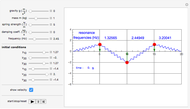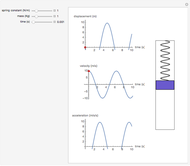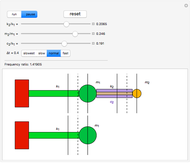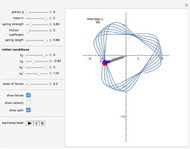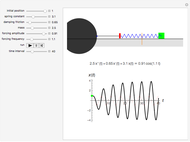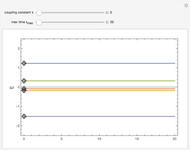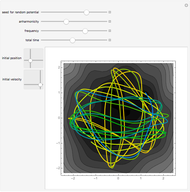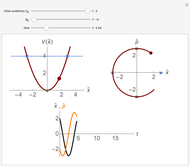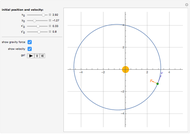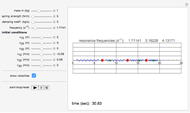Longitudinal Oscillations and Resonance of a Four-Spring, Three-Mass System

Requires a Wolfram Notebook System
Interact on desktop, mobile and cloud with the free Wolfram Player or other Wolfram Language products.
Study the longitudinal oscillations and forced vibrations of this system with three degrees of freedom. You can set the initial conditions and the spring strength, damping coefficients, etc.
[more]
Contributed by: Árpád Kósa (March 2011)
Open content licensed under CC BY-NC-SA
Snapshots
Details
This is a simple mechanical system with four identical springs and three bodies of equal mass. Only longitudinal oscillations are allowed. This system has three different frequencies at which resonance occurs; these frequency values are displayed. If you set the frequency of the exciting force to one of the resonance values and set the damping coefficient to 0, you can see the strong oscillations characteristic of the resonance phenomenon.
You can observe the three different oscillation modes at the different resonance frequencies. These resonance frequencies are the so-called eigenvalues of the functions describing the oscillations of this system.
The exciting force acts on the right side of the spring chain.
For free vibrations, set the exciting force frequency to 0. In this case you can set the positions and initial velocities and then see the free oscillations.
For a much more detailed description, see L. D. Landau and E. Lifshitz, Course of Theoretical Physics, Vol. 1, Oxford: Pergamon Press, 1960.










